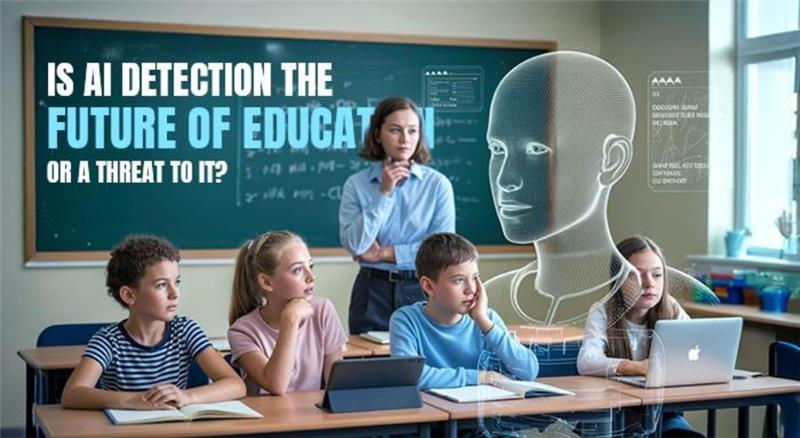Is AI Detection the Future of Education—or a Threat to It?
- KARTIK MEENA
- Aug 14
- 3 min read

First they came for plagiarism. Now, the algorithms are figuring out how to detect something much darker: the faint fingerprints of artificial intelligence itself. A few taps on ChatGPT can spit out an essay in fewer minutes than it takes to boil water, and the schools are racing to defend themselves. Step forward AI detection—Turnitin AI chief among them—sold as the new guardian of academic integrity.
But guardians can turn into gatekeepers. And when the gate is a black-box algorithm, the distinction between safeguarding integrity and controlling creativity begins to dissolve.
Why Detection Became Inevitable
The emergence of generative AI tools—ChatGPT, Claude, and Gemini—has made the urge to "outsource" tasks more powerful than ever. A student can write a decent essay, lab report, or even poetry within minutes, shortening hours of effort.
Detection software became the natural response. Rather than matching a submission against known sources, like plagiarism detectors, it looks for statistical fingerprints—word probabilities, sentence constructions, and stylistic patterns betraying algorithmic provenance. Turnitin AI, for example, runs such analyses in the background on most learning platforms.
In theory, it's a nice solution. In reality, it's a brittle one.
The Comforting Side of Control
For teachers, AI detection presents a tempting promise:
Maintain intellectual integrity by detecting AI-enabled work before it can be presented as original.
Prevent cheating simply by notifying students that their work will be searched.
Seamlessly integrate into present submission systems, disrupting workflow as little as possible.
It's no wonder many schools use these instruments as their first—and sometimes sole—line of defense.
The Fault Nobody Should Ignore
The issue is that detection isn't perfect. And in school, one false positive can ruin the academic reputation of a student.
False positives are a genuine and harmful threat. A thoroughly researched, formally composed essay from a high-achieving student can be misinterpreted as "too AI-like."
Transparent algorithms mean students and teachers don't even know why the software makes its decisions.
Deterioration of judgment occurs when teachers rely on software decisions rather than balanced judgment.
When a tool flags an item of work as suspicious, the consequences can be fast and drastic—even though the tool is incorrect.
The "Arms Race" Nobody Wins
There's one more, less obvious threat: the never-ending arms race between AI authors and AI detectors.
As soon as a model such as GPT is upgraded, detection systems race to catch up. Meanwhile, new "AI humanizers" and rewording tools emerge to bypass detection. This is higher education's version of a cold war—costly, tiresome, and ultimately unwinnable if the target is to entirely eradicate AI-generated content.
The Trust Deficit
It is based on trust: trust that students are actually doing their own work and trust that teachers are grading honestly. When every submission is scanned with suspicion, that bond begins to unravel.
Students might feel they're writing for the algorithm instead of their instructor, steering clear of specific words or styles in order to avoid a false flag. Teachers will start to suspect every over-polished paragraph. The classroom becomes less an environment of discovery and more an environment of monitoring.
Smarter Paths Forward
If AI detection is here to stay—and it very likely is—then its purpose will have to be balanced and transparent. Some alternatives and complements might involve:
Draft-based submissions enabling the educator to monitor the development of a student's work.
Oral defenses in which students succinctly summarize their thinking and process.
Transparent AI use policies specifying appropriate aid from tools.
Multi-tool authentication so a single spurious reading can't condemn a student.
Using AI detection in conjunction with human review, schools can protect integrity without losing trust.
A Crossroads for Education
The next generation of AI detection can look beyond word analysis, adding keystroke tracking, metadata monitoring, and real-time writing observation to the mix. These might enhance accuracy—but introduce new privacy issues that shouldn't be dismissed.
Some innovative teachers are already experimenting with disclosure models: rather than punishing AI use, they invite students to report how they've employed AI in their writing. That changes the discussion from "catching cheats" to "teaching proper use."
The takeaway?
Turnitin AI and other tools can be great friends—but they're not impartial referees. They have biases, blind spots, and the ability to harm trust if misused.
If we allow algorithms to control too much of the learning process, we run the risk of creating a culture in which learning is more heavily policed than it is cultivated. AI detection must be a guardrail, not a gate. The true test of contemporary education is not to vanquish AI but to educate in conjunction with it—and to do so without sacrificing the human relationship that learning is worth fighting to preserve in the first place.
Comments